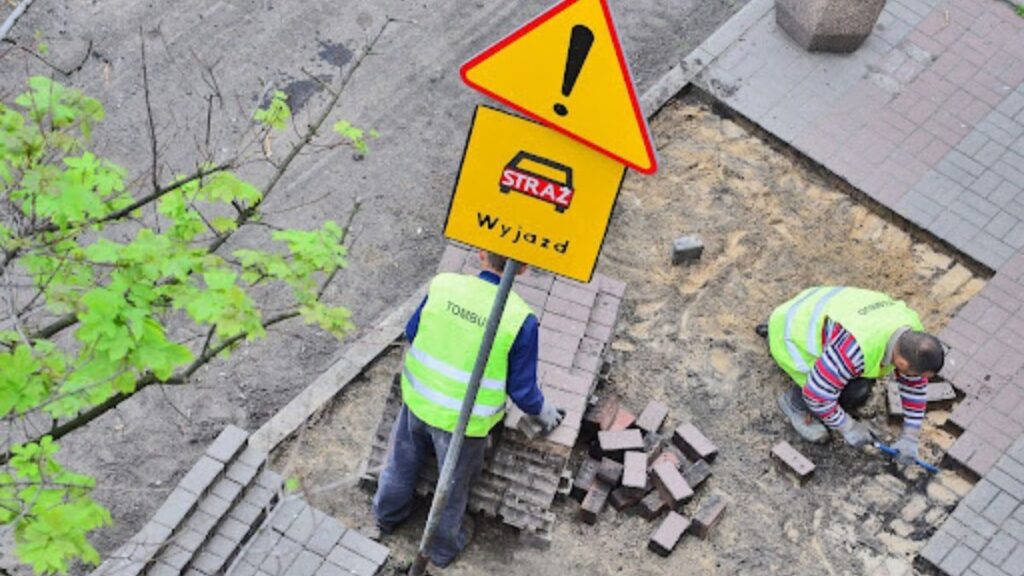Transforming your outdoor space with pavers can add a stylish and functional touch to any landscape. Whether you’re creating a cozy patio, a welcoming walkway, or a sturdy driveway, paver installation offers a lasting solution that’s both beautiful and durable. While installing pavers might seem daunting, breaking it down into a step-by-step process can make the project manageable, even for beginners.
This guide will walk you through each phase, from planning and prepping the ground to placing the pavers and adding the finishing touches. With a little patience and attention to detail, you’ll be able to craft a professional-looking paver installation that stands the test of time. Let’s get to the steps.
Planning Your Project
Before diving into the actual installation, it’s crucial to spend some time planning. Start by determining the purpose of your paved area. For instance, pavers used for a patio might differ from those used for a driveway in terms of thickness and durability. Choose pavers that match the aesthetic of your outdoor space and are suitable for the local climate.
Once you’ve selected your pavers, sketch a layout that maximizes your space and includes any patterns you want to incorporate. Think about drainage needs, slopes, and any nearby landscaping features that could affect your project. This initial planning will save you time and effort during the installation phase.
Preparing the Site
Site preparation is essential for a successful paver installation. Begin by marking the perimeter of your paver area with stakes and string, creating a clear guide for excavation. Use a tape measure to confirm that your dimensions align with your layout, adjusting as necessary. When you’re ready to dig, excavate to a depth that allows space for a base layer, bedding sand, and pavers themselves.
A general rule of thumb is to dig 7-9 inches deep, but this varies based on soil type and the intended load. Clear out rocks, roots, and debris that could disrupt the base, ensuring an even, clean foundation to support your pavers.
Creating a Solid Foundation
A solid foundation is essential for the long-term success of your paver installation. Start by laying a layer of crushed stone or gravel as your base material. This provides stability and helps with drainage, ensuring your pavers don’t shift or sink over time.
The thickness of the base layer will depend on your specific project needs. For instance, you can use a paver base calculator to know the materials you need and determine the right depth for optimal support. Once the material is spread evenly, use a plate compactor to compact the base layer thoroughly. This process ensures a dense and stable surface, essential for the durability of your paver project.
Adding the Sand Layer
After compacting the base, it’s time to add a layer of bedding sand. This layer serves as a cushion for your pavers, helping them settle evenly and lock into place. Spread a 1-inch layer of sand across the area, taking care to avoid adding too much, as excess sand can lead to uneven paver placement.
Use a screed board or a long piece of wood to level the sand, ensuring it’s smooth and consistent. Take your time with this step, as an uneven sand layer can cause your pavers to shift or wobble. Once leveled, avoid disturbing the sand until you’re ready to place the pavers.
Placing the Pavers
Now comes the exciting part—laying the pavers! Begin at one corner of your area, carefully placing each paver onto the prepared sand layer. Use a rubber mallet to gently tap each paver into place, ensuring a snug fit without disturbing the underlying sand. Pay attention to the pattern you planned earlier, whether it’s a running bond, herringbone, or a custom design, to keep the layout uniform and visually appealing.
For consistent spacing, use spacers between each paver to maintain even gaps, which help with joint stability. Take your time to adjust each paver as needed, creating a level, polished look across the entire surface.
Securing the Edges and Finishing Up
To ensure your pavers stay in place, install edging along the perimeter using edge restraints or paver edging spikes. These edges prevent lateral movement, keeping your pavers securely in place over time. Once the edges are secure, run the plate compactor over the pavers to set them firmly into the sand.
Next, sweep joint sand across the surface, allowing it to fill the gaps between pavers and lock them into place. For added durability and a polished finish, consider applying a paver sealer to protect against weather and wear. This final step will extend the life of your paver installation and enhance its appearance for years to come.
Installing pavers is a rewarding DIY project that can enhance the beauty and functionality of your outdoor space. By carefully planning, preparing the site, and following each step—such as laying the base, placing the pavers, and securing the edges—you can create a durable and professional-looking paved area. With the right materials, attention to detail, and patience, your paver installation will not only improve your landscape but also stand the test of time. So, gather your tools, follow these steps, and enjoy the satisfaction of a job well done.







